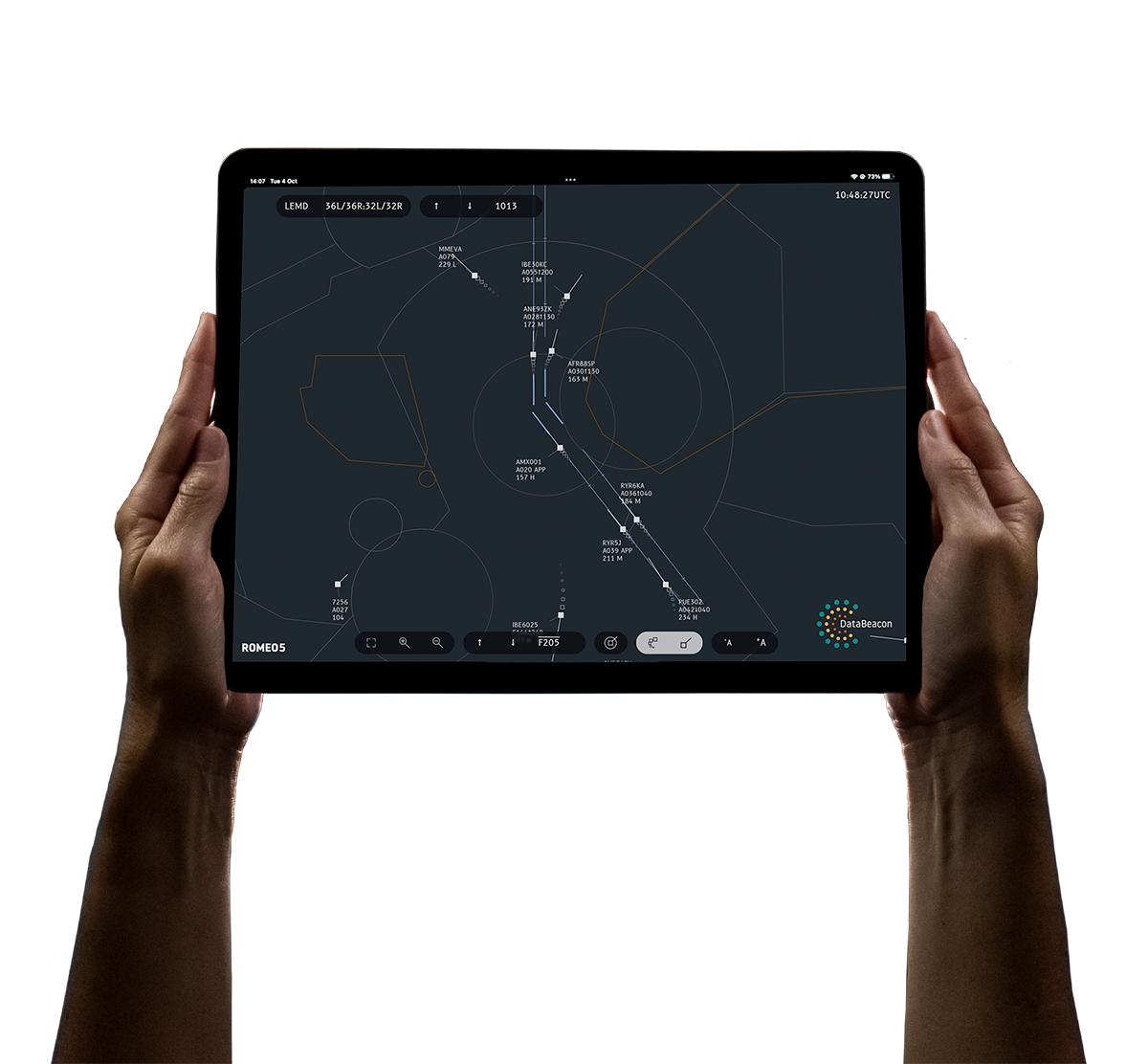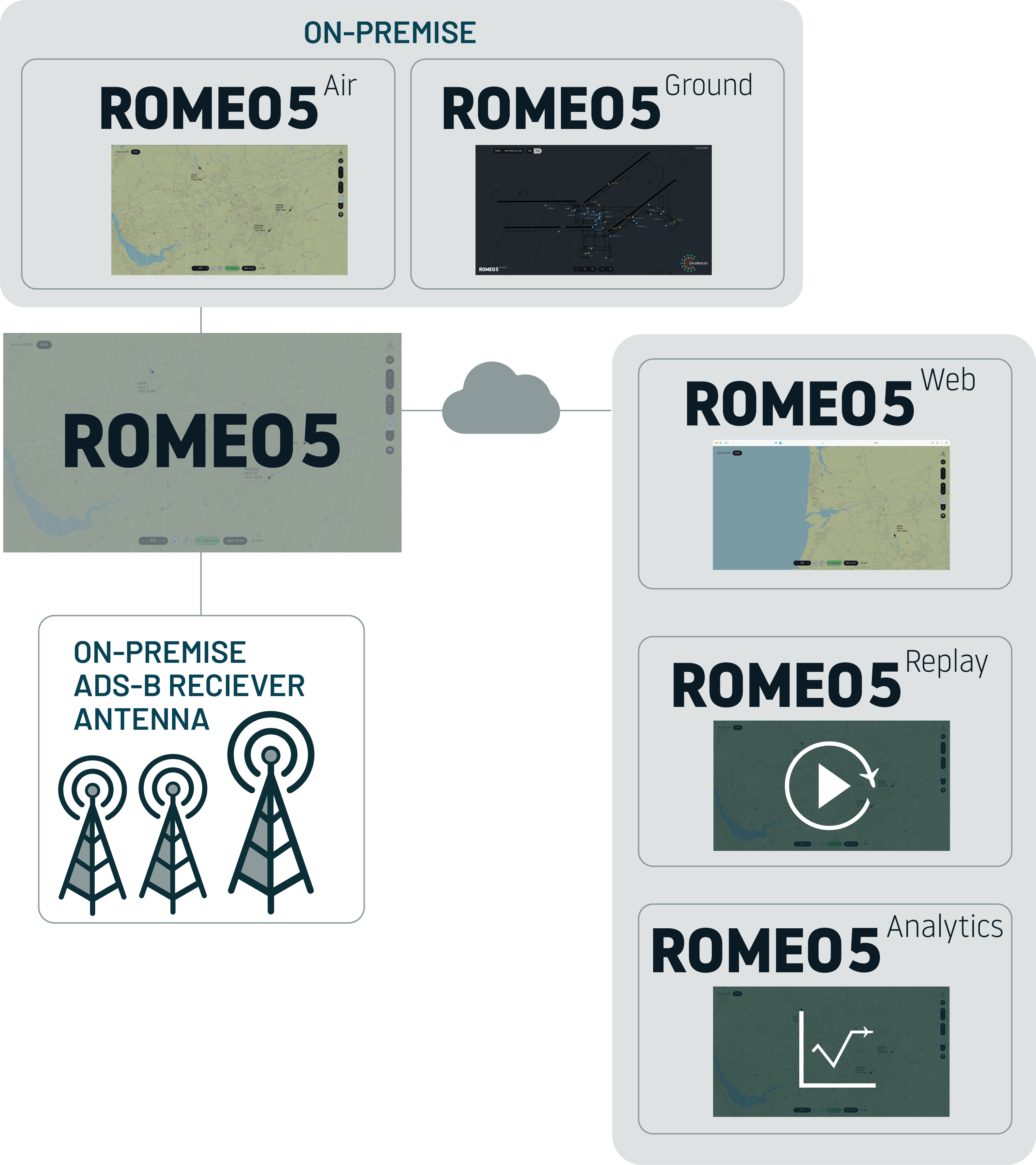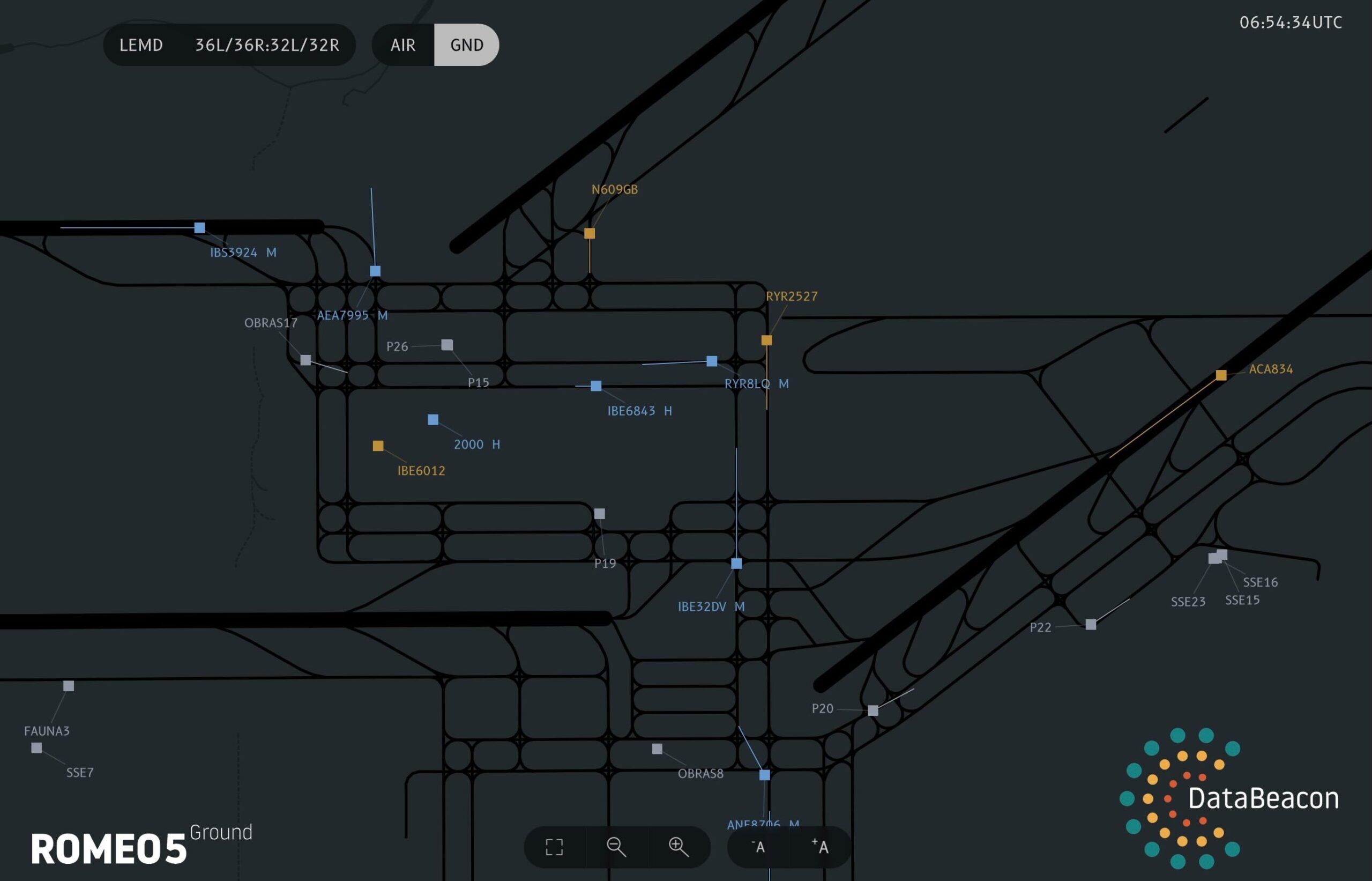
What is Romeo5?
Romeo5 is an ATM-grade Flight Information Display (FID) solution which is capable of displaying aircraft position targets in real-time. This provides Air Traffic Control Officers (ATCOs) or Aerodrome Flight Information Service Officers (AFISOs) with the ability to have enhanced situational awareness of activity on and around an aerodrome, and provision of generalised traffic information to aircraft on frequency. In line with permitted use, it shall not be used for the provision of air traffic separation.
Romeo5 strictly adheres to the regulatory standards, like the standards laid out by the UK Civil Aviation Authority (CAA) in CAP 670 for FIDs, ensuring compliance and reliability in air traffic management. This encompasses the crucial aspect of correcting altitude based on local QNH, in accordance with CAA regulations.
Data is received from various sources (ADS-B/FLARM*) into a single platform, which provides a comprehensive and unified view of the surrounding airspace. Additionally, browser based access of the FID is also provided, allowing for other monitoring and information away from operational positions.
The FID runs on a single, pre-configured standalone small form factored PC, which can be connected to a monitor of your choice. Multiple FID units can be provided for redundancy.
Romeo5 is also offered with an optional cloud data feeds to provide the ultimate multiple redundancy and data validation for the FID. Further information is available on request.
(*FLARM reception optional)

What are the benefits of Romeo5 FID from DataBeacon?
The safety benefits that accrue from the enhanced situational awareness gained by introducing a FID are now well recognised. On top of that, some airports have ambitions to further the development of UAV services and FIDs are a key enabler for these future ambitions.
Enhanced-Situational-Awareness
Minimal ongoing costs
Data Playback
User-friendly Interface
Real-time data
Customisable System
ADS-B data resilience
Ease of Installation
Ground situational awareness
Our Romeo5 Ground solution is particularly relevant for mid-sized airports, where runway safety is a pressing concern. With many of them experiencing rapid growth in air traffic, the need for reliable ground surveillance systems has never been greater. By implementing Romeo5 Ground, airports can improve their situational awareness, reduce the risk of runway incursions, and ultimately enhance the safety of both passengers and aircraft. With our cost-effective solution, even airports with limited resources can benefit from state-of-the-art surveillance technology.

Targets and Labels
Romeo5 effectively positions aircraft on the map and generates labels containing pertinent information such as callsign/registration, altitude/flight level (corrected for QNH), ground speed, squawk and has the capability to incorporate the aircraft wake turbulence category and if the targets are UAVs or helicopters (HEL) on the second line of the label. Moreover, it distinguishes between traffic squawking emergency codes and instances where updates are not received from the ADS-B antenna (FRZ or frozen).
To avoid overlapping, the labels are automatically positioned using an intelligent label avoidance algorithm. To further refine the understanding of traffic dynamics, Romeo5 includes a selectable historical trail for each aircraft.
Pre-set and selectable altitude/level filters are available to remove unwanted targets outside the service area.
Control Elements
The system incorporates a range of intuitive control elements, aligning with best practices in the industry, and CAP 670 regulations. Users have the capability to zoom the map and labels independently, providing a customisable display that caters to specific operational requirements.
The system also prioritises contrast for optimal visibility, ensuring that displayed information remains clear and discernible in various ambient lighting conditions. In instances where multiple antennas and/or cloud are deployed, the system allows for seamless antenna selection, providing flexibility and control over the data sources used for enhanced precision.
Maps and Layers
The mapping functionality within Romeo5 is designed to align with the stringent standards, ensuring accuracy and compliance in displaying critical flight information. During the design phase, we offer a high degree of customisation, empowering them to tailor the map orientation to either the North or align it with the perspective as seen from the tower window. This adaptability caters to individual preferences, providing a client- centric interface for enhanced operational efficiency.
Moreover, during design, the system offers comprehensive customisation options, enabling clients to personalise maps by incorporating essential details such as fix points, airways, visual reference points, VFR corridors, and any other topographic pertinent features. This level of customisation fosters a tailored user experience, streamlining the identification and tracking of specific locations in the vicinity of the airport.
Romeo5 further enhances its versatility with the integration of customisable layers. Users can selectively activate or deactivate layers to display different elements, names of fix points or populations, restricted areas, SIDs or STARs. This layering capability ensures that the displayed information is contextually relevant and aligns precisely with the operational needs of the users.
Continued Support
We prioritise testing software updates thoroughly before deploying them to clients’ systems. Updates will be tested in our secure cloud environment to ensure they are functional and do not cause any issues. Once approved, updates will go through a change management and approval process before being deployed. Our rigorous testing process ensures updates meet quality standards and do not cause downtime or issues. We will also offer periodic security updates to ensure systems run smoothly and resolve any critical security breaches or errors. Our team will work closely with clients to implement security upgrades efficiently, minimising downtime and disruption. We understand the importance of keeping systems secure and up-to- date, which is why we offer this service as part of our ongoing support options.
